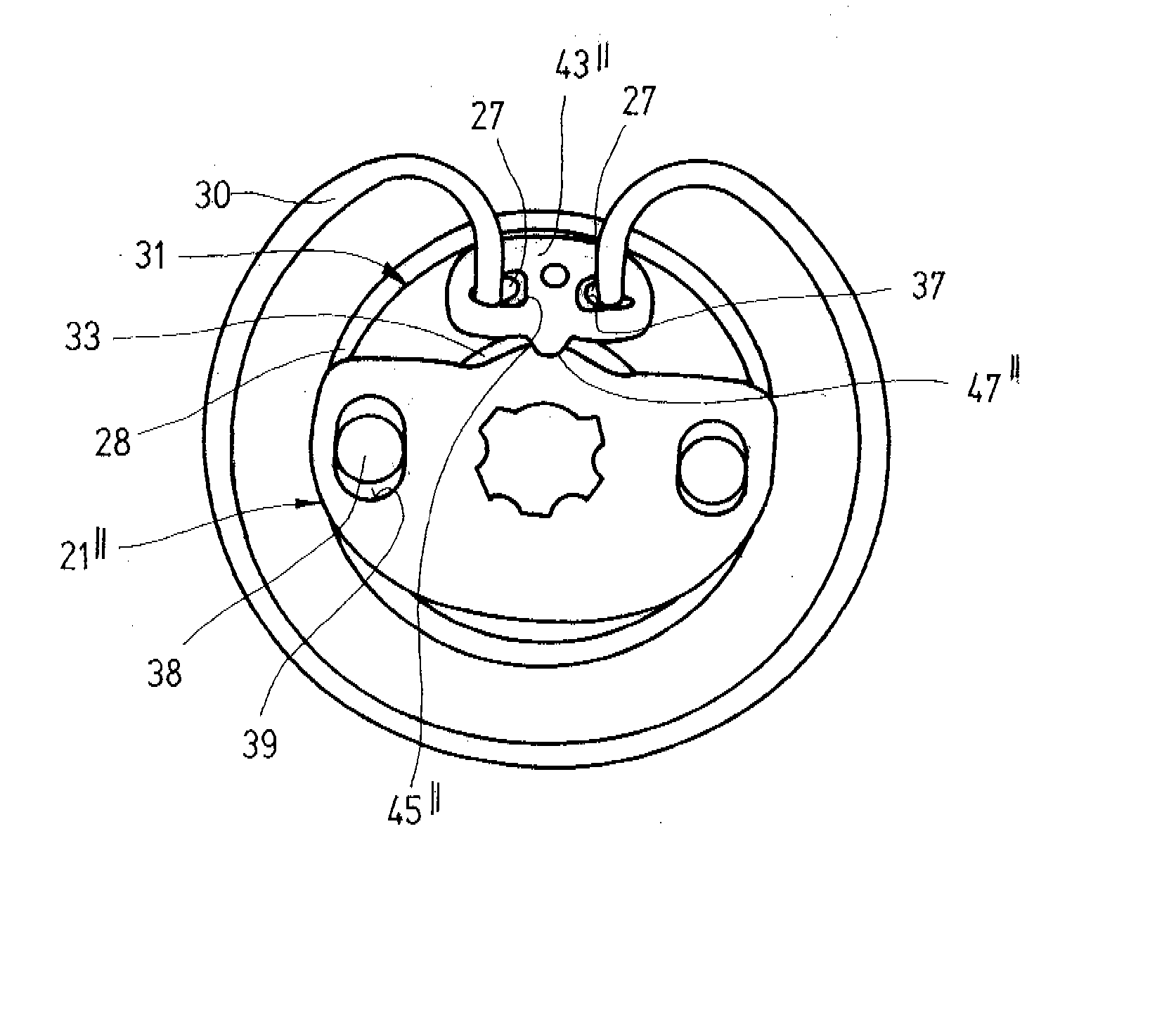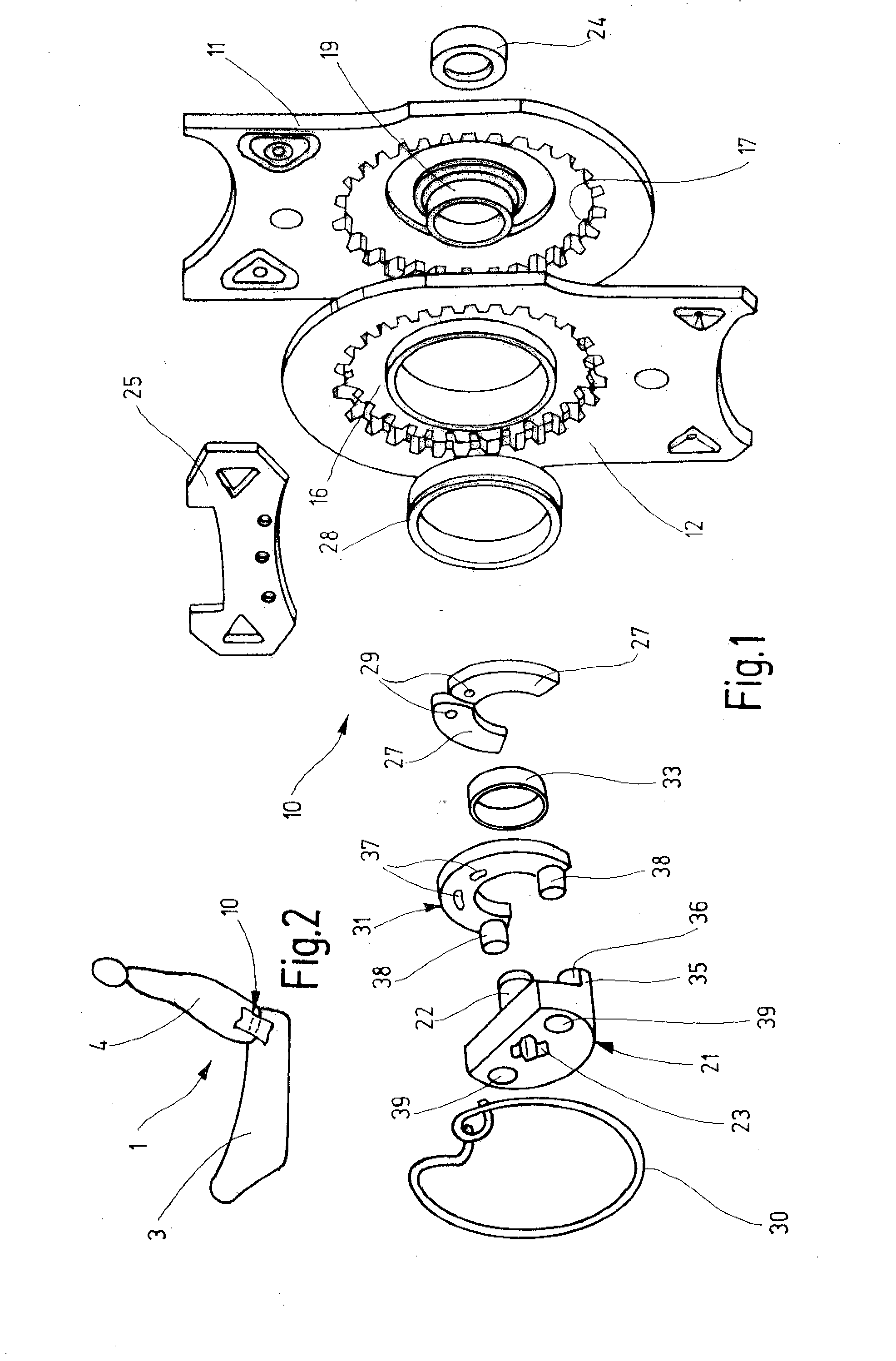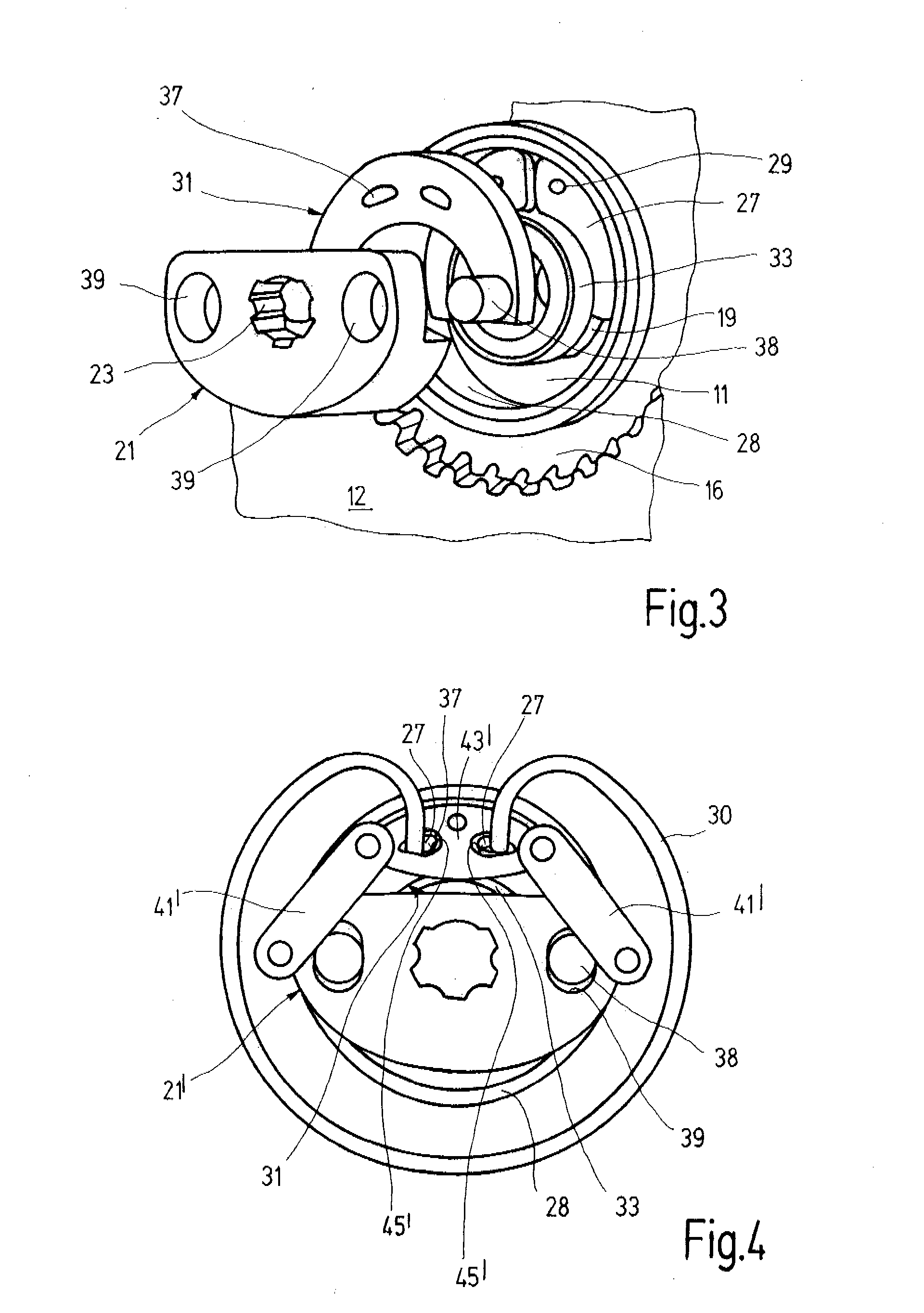Fitting for a vehicle seat
a vehicle seat and seat technology, applied in the field of vehicle seats, can solve the problems of increasing the necessary operating force, and achieve the effects of increasing the operating force, reducing the operating force, and increasing friction
- Summary
- Abstract
- Description
- Claims
- Application Information
AI Technical Summary
Benefits of technology
Problems solved by technology
Method used
Image
Examples
Embodiment Construction
[0025] A vehicle seat 1 for a motor vehicle comprises a seat part 3 and a backrest 4. The inclination of the backrest 4 may be manually adjusted relative to the seat part 3. The inclination adjustment of the backrest 4 is carried out by way of a handwheel provided at the side and a drive shaft that drives two fittings 10 together. The two fittings 10 are respectively attached to the two sides of the vehicle seat 1 and support the backrest 4.
[0026] Each fitting 10 is configured as a geared fitting in which a first fitting part 11 and a second fitting part 12 are connected to one another via a gear for locking and adjusting. The two fitting parts 11 and 12 have a substantially flat shape and are composed of steel. The first fitting part 11 is primarily connected to the structure of the backrest 4 (fixed to the backrest) and therefore shown at the top in the drawings. Accordingly, in the present case, the second fitting part 12 is primarily fixed to the seat part and shown at the bott...
PUM
 Login to View More
Login to View More Abstract
Description
Claims
Application Information
 Login to View More
Login to View More - R&D
- Intellectual Property
- Life Sciences
- Materials
- Tech Scout
- Unparalleled Data Quality
- Higher Quality Content
- 60% Fewer Hallucinations
Browse by: Latest US Patents, China's latest patents, Technical Efficacy Thesaurus, Application Domain, Technology Topic, Popular Technical Reports.
© 2025 PatSnap. All rights reserved.Legal|Privacy policy|Modern Slavery Act Transparency Statement|Sitemap|About US| Contact US: help@patsnap.com



